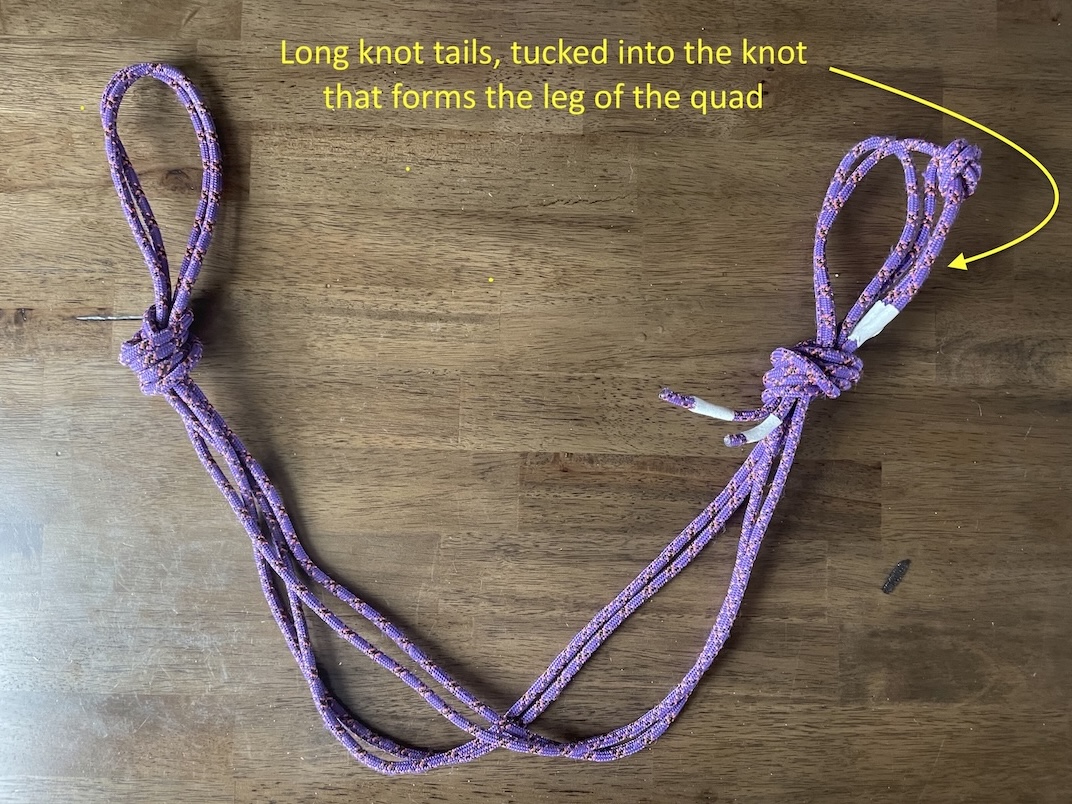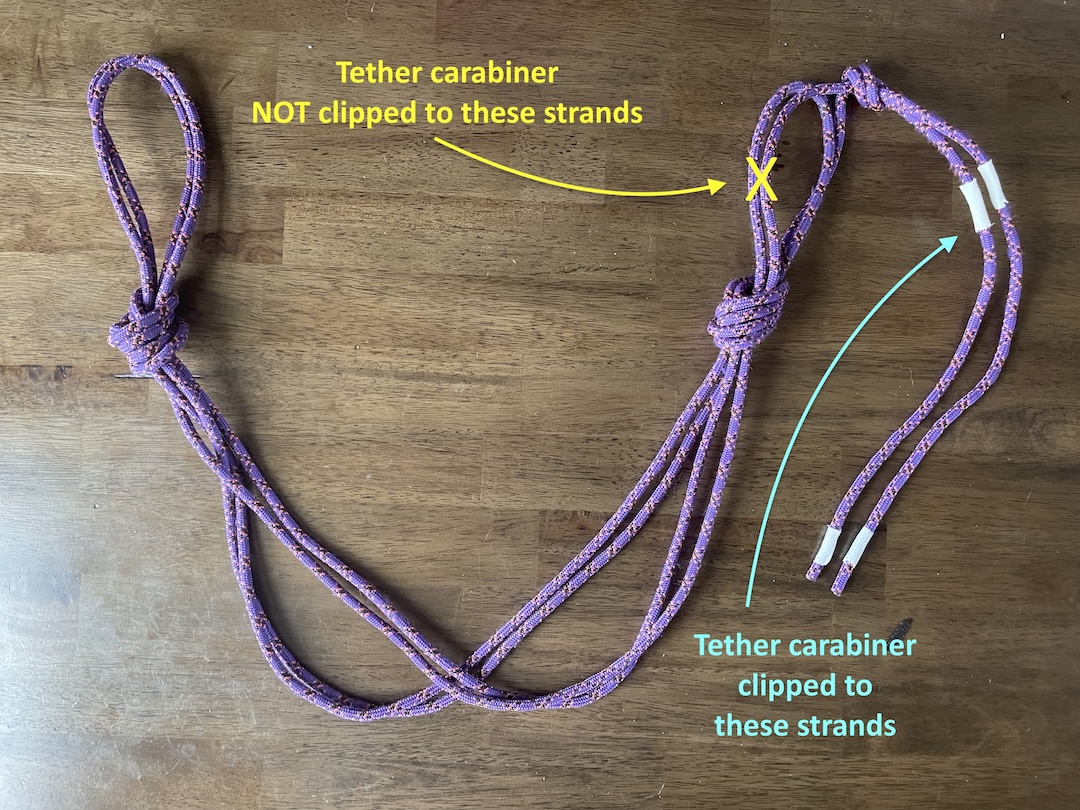Ground Fall — Clipped Knot Tails Instead of Knot
South Dakota, Custer State Park, Sylvan Lake Area
 On July 4, Person 1 (23) was climbing with two novices in the area behind Sylvan Lake on a wall with accessible top-rope anchors. While setting up the top-rope, Person 1 tethered themselves into a “protective bolt,” separate from the two-bolt anchor. They incorporated a quad to build the anchor.
On July 4, Person 1 (23) was climbing with two novices in the area behind Sylvan Lake on a wall with accessible top-rope anchors. While setting up the top-rope, Person 1 tethered themselves into a “protective bolt,” separate from the two-bolt anchor. They incorporated a quad to build the anchor.
Person 1 moved their tether carabiner from the “protective bolt” and clipped it into several strands of the quad. When they stepped out onto the face and sat back in their harness, they fell to the ground.
 Person 1 fell 40 feet. Their momentum was slowed by a large chimney flake two-thirds of the way down and a five-foot slab section at the base. They remained in supine position on the ground while a passerby called 911. The novice climbers used clothing layers to keep Person 1 warm. A SAR team arrived in ten minutes and an ambulance within 20. Person 1 had been wearing a helmet and suffered no life-threatening injuries. They were backboarded to an ambulance, having suffered two lacerations, a large contusion on the buttocks, and a sprained shoulder.
Person 1 fell 40 feet. Their momentum was slowed by a large chimney flake two-thirds of the way down and a five-foot slab section at the base. They remained in supine position on the ground while a passerby called 911. The novice climbers used clothing layers to keep Person 1 warm. A SAR team arrived in ten minutes and an ambulance within 20. Person 1 had been wearing a helmet and suffered no life-threatening injuries. They were backboarded to an ambulance, having suffered two lacerations, a large contusion on the buttocks, and a sprained shoulder.
ANALYSIS
Person 1 made the quad from aramid cord, tied with a flat overhand knot to form a loop. The loop was doubled over, and two overhand knots formed the legs and masterpoints of the quad. Two long tails extending from the original flat overhand knot were accidentally tucked into that leg knot, forming an unsecured loop. The loop failed when weighted as the tails slipped out of the knot, and Person 1 fell to the ground.
Person 1 wrote to ANAC, “My greatest lesson has been to avoid complacency and haste; systems are always worth another double-check. I failed to recognize how a small difference when dressing a knot can have serious consequences. One should tether directly to the appropriate components—in this instance, one of the masterpoints.” (Source: Person 1.)
*Editor’s Note: This incident echoes the practice of tucking a long tail back into a knot or tying an overhand knot in a long tail as a “backup.” Most common instances of this involve figure 8 follow-through knots or bowlines. Tucking loose ends or tying backup knots is neither a substitute for, nor a necessary supplement to a clean, well-dressed knot. The AMGA does not recommend a backup to a figure 8 knot because this makes it harder to visually inspect the knot during preclimb checks. In this case, retying the quad or simply trimming the long tails would have prevented a potentially fatal accident.

